Haiti Flag Meaning
Two horizontal stripes of blue over red, representing the union of black and mixed-race Haitians and the blood shed for independence, making Haiti the first independent black republic and symbol of successful slave revolution.
- Continent
- North America
- Adopted
- 1986
- Ratio
- 3:5
- Colors
- blue, red
- Designer
- Jean-Jacques Dessalines (original 1804 design)
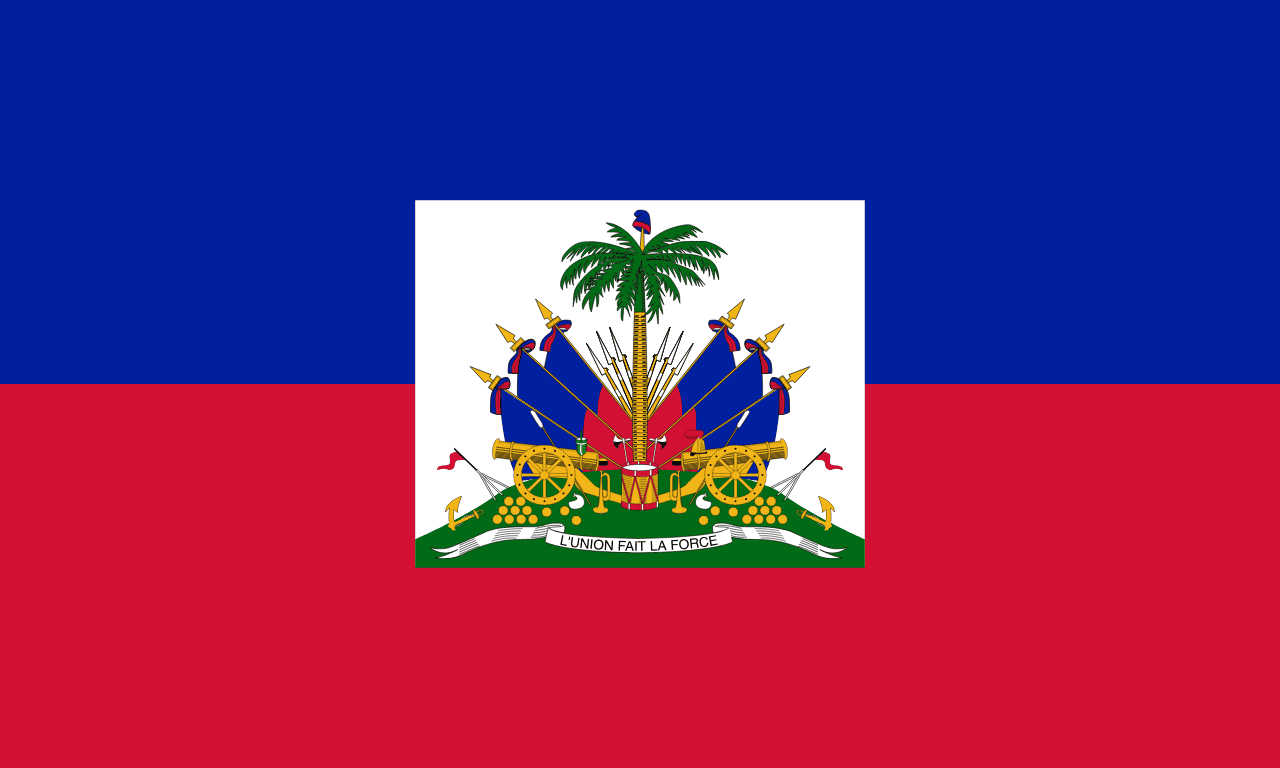
Symbolism
Blue Stripe: Represents the black population of Haiti and their African heritage, symbolizing the former slaves who fought for freedom and the majority population that achieved independence through the world's only successful slave revolt.
Red Stripe: Represents the mixed-race (mulatto) population and the blood shed during the Haitian Revolution, symbolizing the sacrifice made by all Haitians in their struggle for freedom and the unity between different groups in the fight for independence.
Combined Colors: Together, blue and red represent the union of all Haitians regardless of race or color, symbolizing the motto 'L'Union Fait La Force' (Unity Makes Strength) and the revolutionary principle of equality that founded the nation.
History
- 1492-1697: Spanish colonization began with Christopher Columbus, who named the island Hispaniola, leading to the decimation of the indigenous Taíno people and the introduction of African slavery.
- 1697-1791: The western third of Hispaniola became the French colony of Saint-Domingue, developing into the world's wealthiest colony through brutal sugar plantation slavery that imported hundreds of thousands of Africans.
- 1791-1804: The Haitian Revolution began with a slave uprising led by figures like Toussaint Louverture and Jean-Jacques Dessalines, culminating in the world's first and only successful slave revolution.
- January 1, 1804: Jean-Jacques Dessalines declared independence and created the first flag by tearing the white stripe from the French tricolor, leaving blue and red to represent the new Republic of Haiti.
- 1804-1820: Haiti alternated between different flag designs under various rulers, including Henri Christophe's kingdom in the north and Alexandre Pétion's republic in the south, each using different symbols.
- 1822-1844: Haiti unified the entire island of Hispaniola under President Jean-Pierre Boyer, flying the Haitian flag over the whole island until the Dominican independence movement succeeded.
- 1915-1934: During the U.S. military occupation, the flag continued to represent Haitian sovereignty while the country experienced significant American intervention in its political and economic affairs.
- 1957-1986: The Duvalier dictatorship (Papa Doc and Baby Doc) maintained the flag while ruling through terror and repression, representing the struggle for democracy and human rights.
- 1986-Present: The fall of the Duvalier regime restored democratic hopes, with the flag representing Haiti's ongoing efforts to build stable democratic institutions despite political instability and natural disasters.
Trivia
- Haiti was the first independent black republic in the world and the second independent nation in the Americas after the United States.
- The Haitian Revolution (1791-1804) was the only successful slave revolt in human history, inspiring abolition movements worldwide.
- Haiti's independence in 1804 came 60 years before the American Civil War ended slavery in the United States, making it a pioneer in human freedom.
- The flag represents a country that was forced to pay massive reparations to France for the 'loss' of enslaved people, crippling Haiti's economy for over a century.
- Haiti shares the island of Hispaniola with the Dominican Republic, making it one of only three islands in the world shared by two sovereign nations.
- The flag flies over a country where Creole and French are official languages, reflecting both African heritage and colonial history.
- Haiti is the most mountainous country in the Caribbean, with about 75% of its territory consisting of mountains and hills.
- The flag represents the birthplace of Vodou (Voodoo), a religion that blends African spiritual traditions with Catholicism and indigenous beliefs.
- Port-au-Prince, the capital, was devastated by a magnitude 7.0 earthquake in 2010 that killed over 200,000 people and displaced millions.
- Haiti was once the world's leading producer of sugar and coffee, with the wealth built on plantation slavery making Saint-Domingue France's most valuable colony.
- The flag flies over a country that provided crucial support to Latin American independence movements, with Haiti helping Simón Bolívar in exchange for his promise to abolish slavery.
- Haiti is the poorest country in the Western Hemisphere, despite its rich history and natural resources, facing ongoing challenges with poverty and political instability.
- The Citadelle Laferrière, a massive mountaintop fortress built after independence, is a UNESCO World Heritage Site and symbol of Haitian determination to remain free.
- Haiti's flag represents a country with a rich artistic tradition, particularly in painting, sculpture, and music, with Haitian art being internationally recognized.
- The country has faced numerous natural disasters, including hurricanes, earthquakes, and cholera outbreaks, testing the resilience symbolized by the flag's revolutionary heritage.
Related Countries
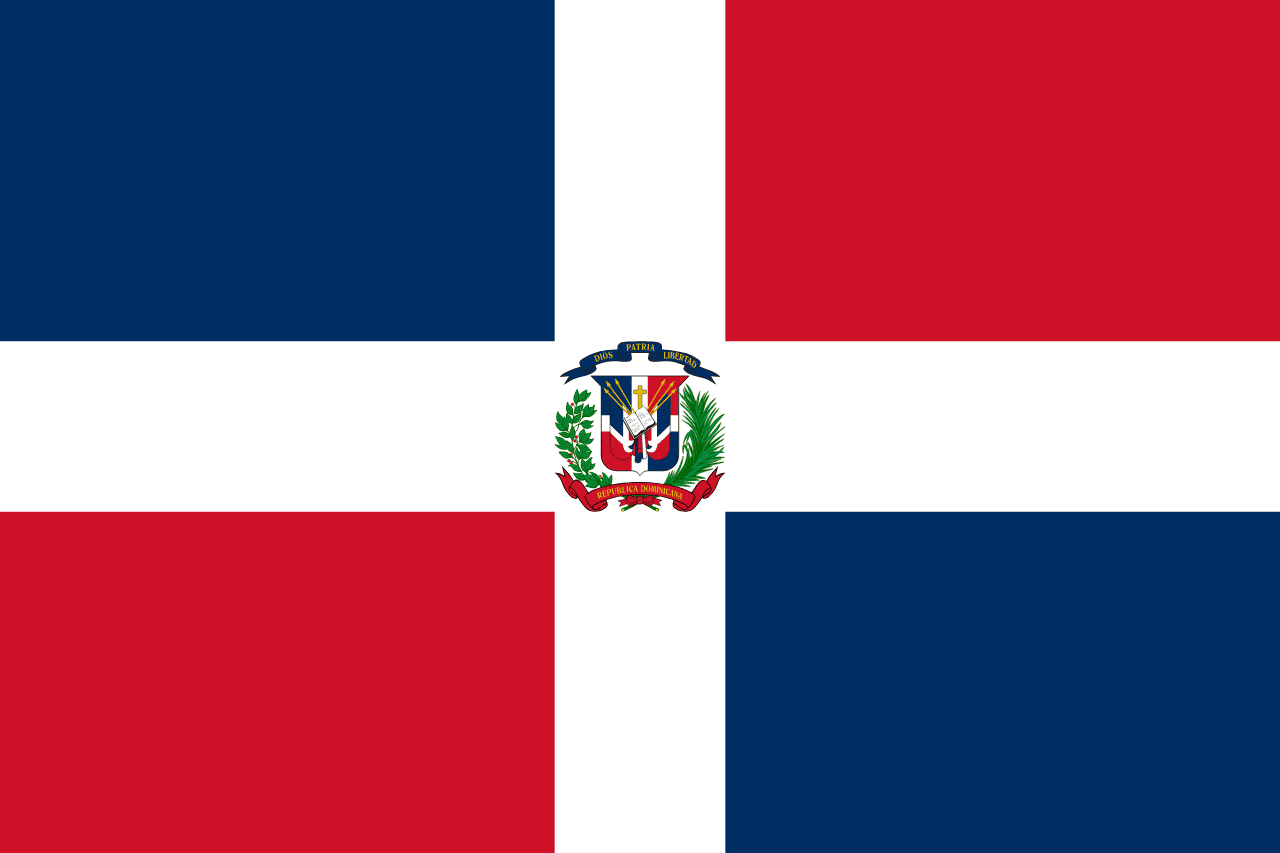
Dominican Republic
North America
Four quarters alternating blue and red separated by a white cross, with the national coat of arms in the center, representing liberty, the blood of heroes, salvation and peace, and the Christian faith of the Dominican people.
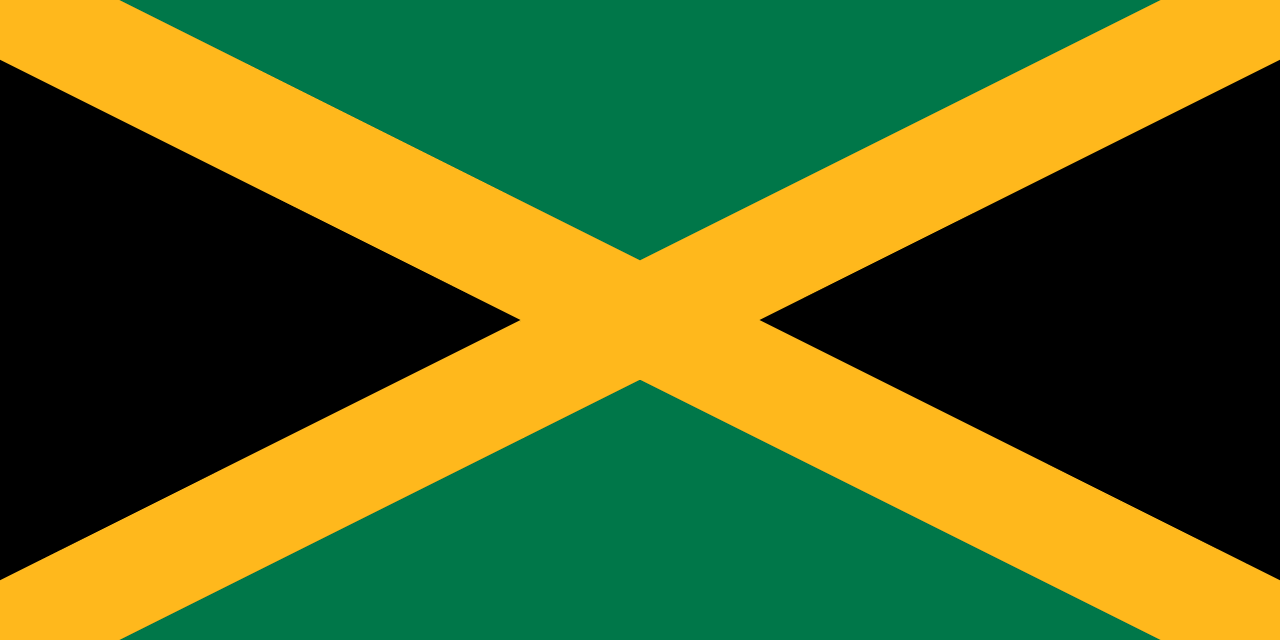
Jamaica
North America
A diagonal cross pattern dividing the flag into four triangles, with green triangles at top and bottom, black triangles at hoist and fly, and yellow diagonal cross, symbolizing the natural beauty, strength of the people, and golden sunshine of Jamaica.
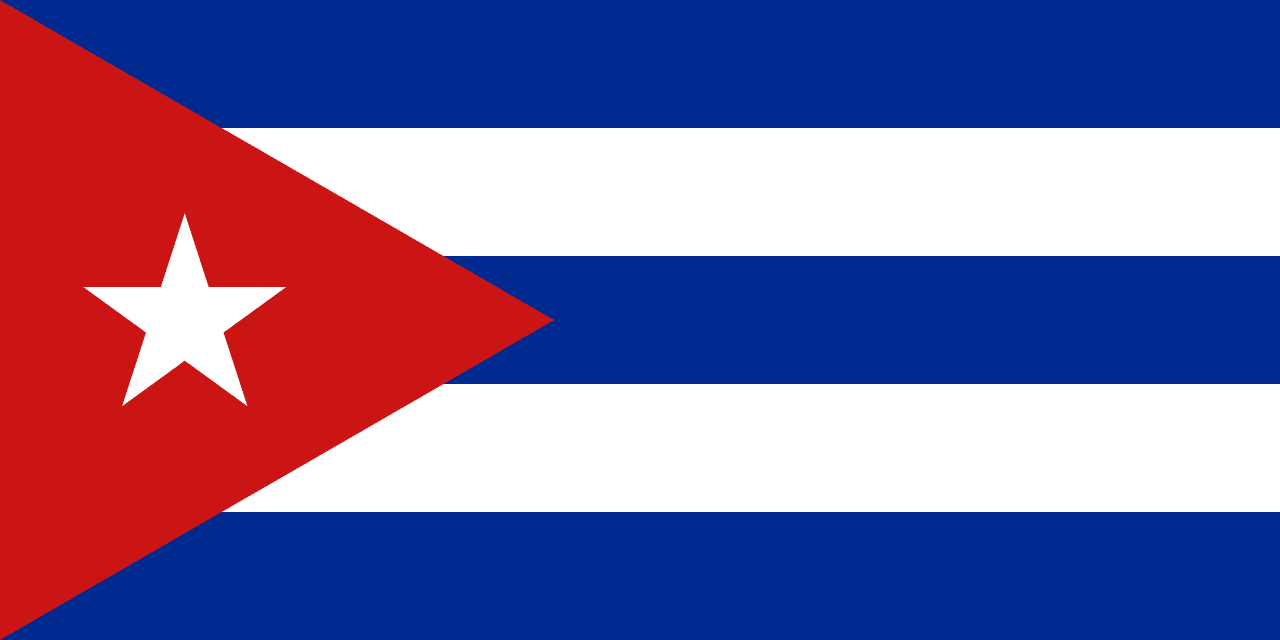
Cuba
North America
Five horizontal stripes alternating blue and white with a red equilateral triangle at the hoist containing a white five-pointed star, representing the three original provinces, purity, the blood of martyrs, and the independence of Cuba.
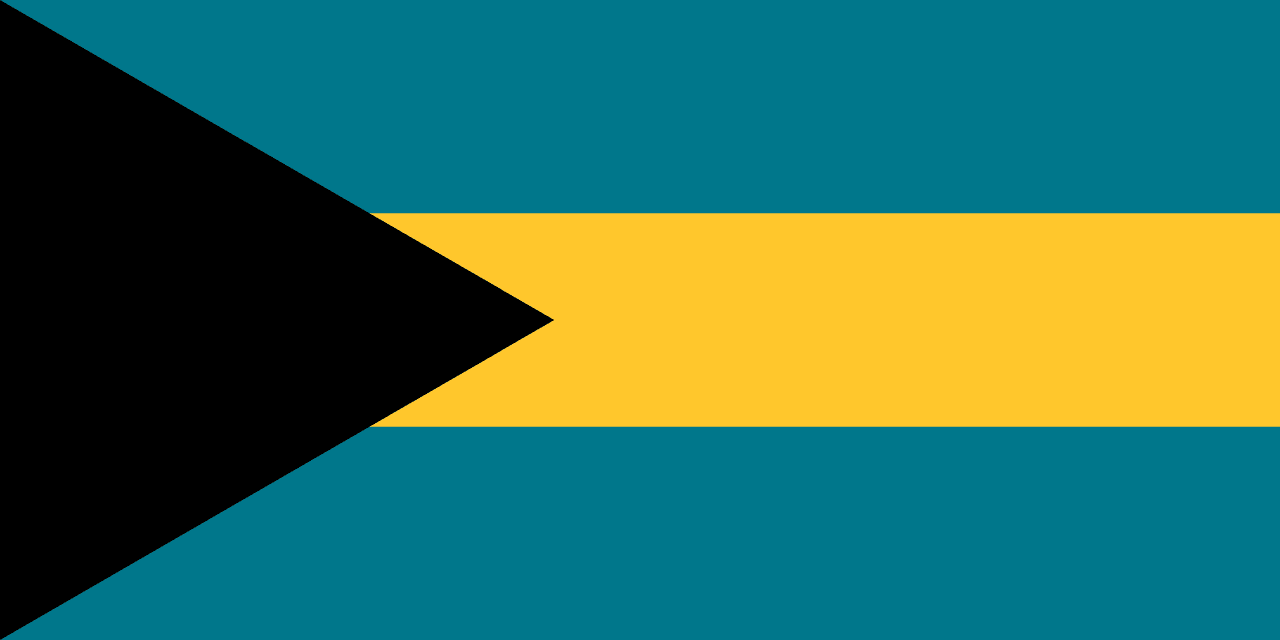
Bahamas
North America
Three horizontal stripes of aquamarine, gold, and aquamarine with a black equilateral triangle at the hoist, representing the waters surrounding the islands, the golden beaches and sunshine, and the strength and determination of the Bahamian people united in their love for their homeland.
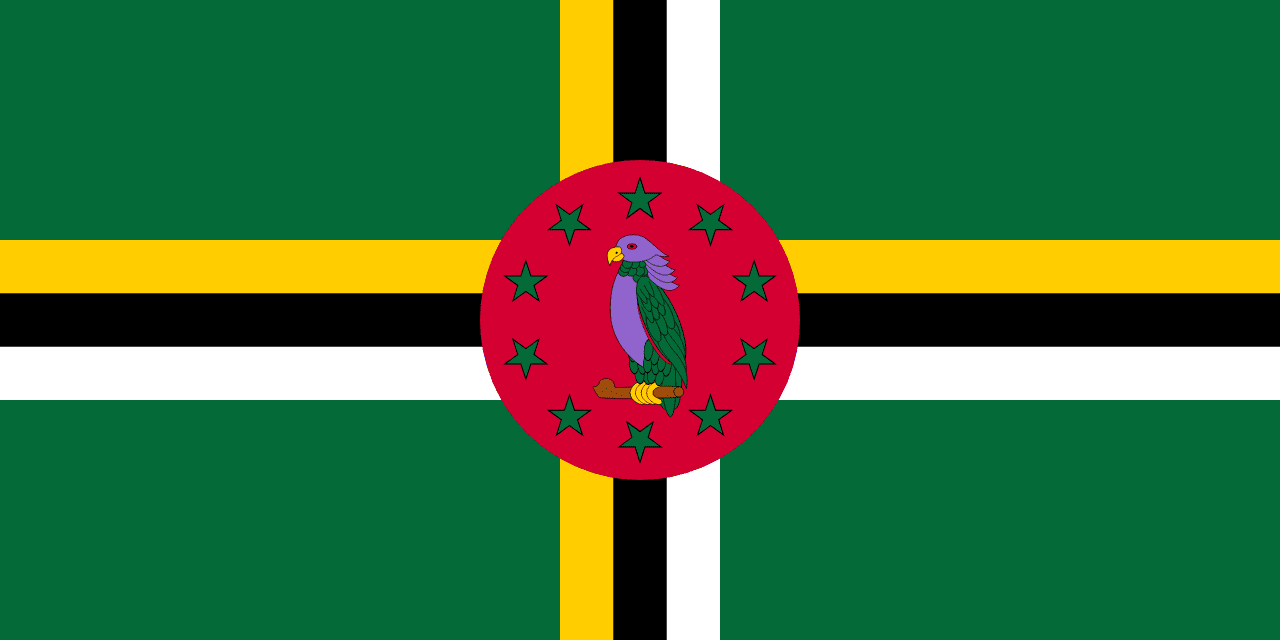
Dominica
North America
A green field with a cross pattern of yellow, black, and white stripes and a red circle in the center containing the Sisserou parrot, representing the lush vegetation, the Trinity, racial harmony, and the unique wildlife of the 'Nature Island of the Caribbean.'
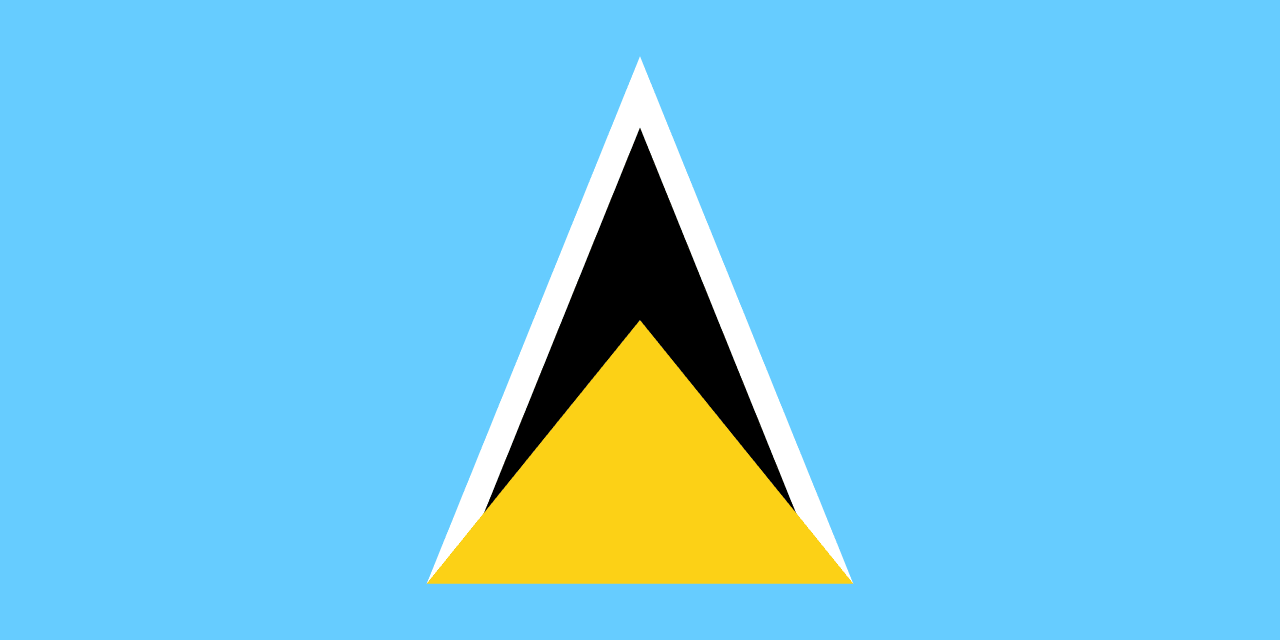
Saint Lucia
North America
A cerulean blue field with a gold isosceles triangle in front of a white-edged black triangle. The design reflects the island’s natural features and cultural heritage.